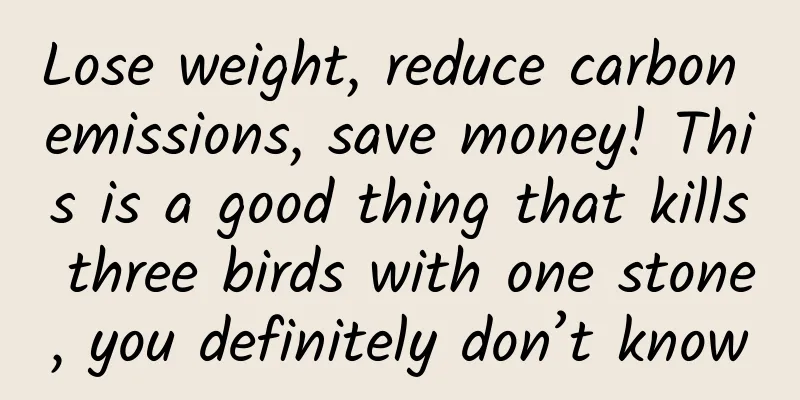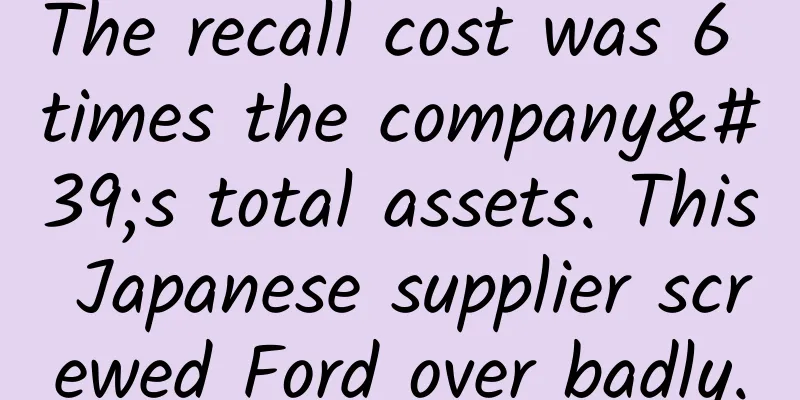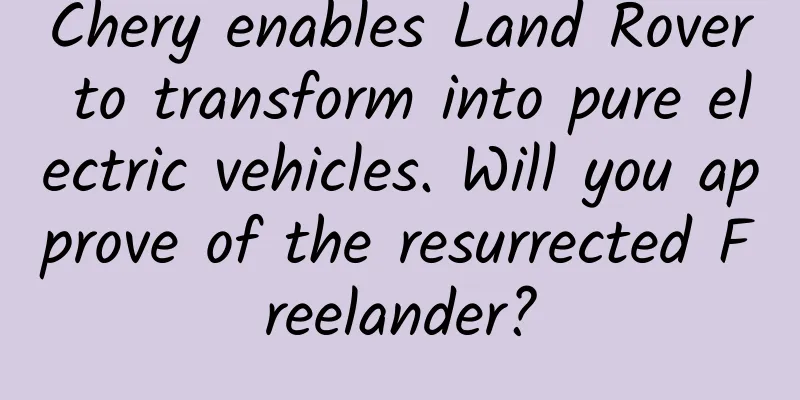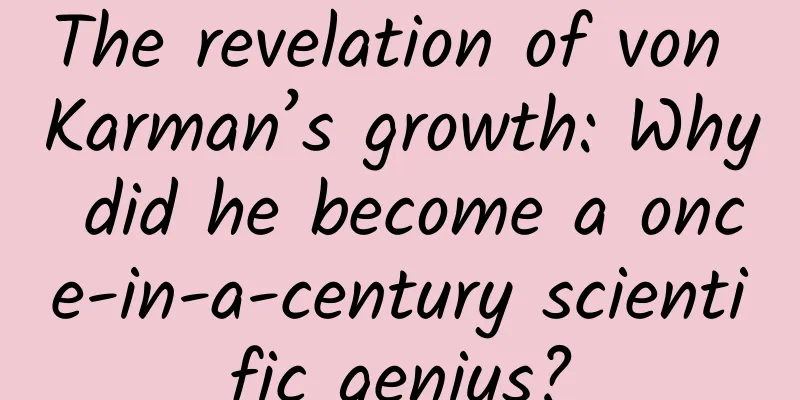Lose weight, reduce carbon emissions, save money! This is a good thing that kills three birds with one stone, you definitely don’t know

|
Do you lack motivation to lose weight? What if losing weight can also help protect the environment? What if it can also bring you some benefits? Copyright images in the gallery. Reprinting and using them may lead to copyright disputes. This is no joke. Developing a habit of walking or riding a shared bike every day can not only burn calories and improve health, but also reduce carbon emissions for the earth. The reduced carbon dioxide emissions can be exchanged for coupons and consumer vouchers, and may even be exchanged for cash in the future. What is going on here, and where can we exchange them? Let's find out. How did carbon dioxide emissions become "money"? As we all know, while industrial production brings convenience to people, it also "steams the earth". Since the Industrial Revolution stepped on the accelerator for the use of fossil energy, the continuous accumulation of greenhouse gases represented mainly by carbon dioxide produced by the burning of traditional energy such as coal and oil has caused global warming, posing a serious threat to the earth's ecological environment and the sustainable development of human society. In order to cool the earth, 195 parties signed the Paris Agreement in 2015, setting the overall goal of controlling the global average temperature rise to no more than 2°C above pre-industrial levels and striving to limit the increase to 1.5°C. Each party set a "dual carbon" target. Christiana Figueres, Executive Secretary of the United Nations Framework Convention on Climate Change, Ban Ki-moon, Secretary-General of the United Nations, Laurent Fabius, French Foreign Minister and President of the United Nations Climate Change Conference (COP21) in Paris, and French President François Hollande celebrate after the adoption of the historic Paris Agreement on Climate Change. Image source: United Nations official website In September 2020, at the 75th United Nations General Assembly, China formally made a "dual carbon" commitment to the world: to achieve carbon peak in 2030 and carbon neutrality in 2060. In order to achieve this goal, my country has successively issued relevant documents such as the "Carbon Peak Action Plan before 2030" and the "2024-2025 Energy Conservation and Carbon Reduction Action Plan", which clarified the country's dual carbon goals and paths. At the same time, it has actively promoted the improvement of the carbon emission rights trading market, and "monetized" carbon dioxide emissions through a market-based mechanism of "whoever emits pays, whoever reduces emissions benefits", making carbon dioxide emission rights a tradable asset. For individuals, this logic can also be applied. With a low-carbon emission reduction lifestyle, the carbon dioxide emissions reduced in life can be converted into "currency forms" such as carbon coins or carbon credits that can offset consumer spending. These "currencies" can then be exchanged for movie tickets, takeaway coupons, consumer discounts, etc. So how can this be achieved? What is Carbon Inclusiveness? The concepts of carbon coins and carbon credits are inseparable from the carbon inclusive policy. So what is the carbon inclusive policy and why do we need to propose such a policy? It turns out that traditional carbon reduction methods are mostly focused on the industrial sector, and the general public has said that global warming is all caused by industrial production. However, if you think about it carefully, you will know that this pot cannot be left to industrial production alone. Because with economic growth, people's consumption level is also constantly improving, and the proportion of carbon emissions from residents' lives is also rising year by year. A research report by the Chinese Academy of Sciences pointed out that in recent years, carbon emissions from consumer sources such as residents’ daily lives have accounted for about 53% of the total carbon emissions in my country, of which the transportation sector is the largest contributor to the total carbon emissions, accounting for about 10% of the total national emissions, and is the third largest source of carbon emissions after electricity and industry. Urban transportation carbon emissions account for about 80% of the transportation sector. Therefore, if we increase the use of public transportation, walking, cycling and other low-carbon travel methods in our lives, we can greatly reduce personal carbon emissions while burning calories, and also help reduce emissions of atmospheric pollutants. Copyright images in the gallery. Reprinting and using them may lead to copyright disputes. In order to promote individual emission reduction, the country has adopted incentives instead of requirements and launched a carbon credit policy. In 2024, the "Opinions of the CPC Central Committee and the State Council on Comprehensively Promoting the Construction of a Beautiful China" included "carbon credit" in a central document for the first time, marking that the status of carbon credit has risen to a national strategy. Its core logic is to record personal low-carbon behaviors (such as walking, cycling, garbage sorting, etc.) through digital means, and quantify, record, and verify various green and low-carbon behaviors of the public, communities, small and medium-sized enterprises, clothing, food, housing, consumption, transportation, and travel based on carbon credit standards or methodologies (that is, the current scientific method of measuring and accounting for carbon emissions). Personal emission reductions are generated and finally summarized into a "carbon ledger" and converted into carbon points, allowing the public to intuitively see their "carbon income" while actively participating in carbon reduction actions, and truly feel that "carbon reduction brings benefits." With such policy support, "control your mouth and move your legs" is not only a slogan for weight loss, but also a key to open the door to green wealth. Taking Beijing's Green Life Season as an example, riding a shared bicycle for 1 km can reduce carbon dioxide emissions by about 250g. When ordering on Ele.me, choosing "no tableware required" can reduce emissions by 45.72g each time. These will be recorded in the personal carbon account book by the mini program, and green points can be obtained that can be used to redeem real money rewards such as free cycling cards and platform shopping coupons. Image source: Platform screenshot When we choose to ride a bike or walk instead of driving, every extra step we take and every extra turn of the pedals completes a triple transformation of “calorie burning → carbon emissions reduction → carbon credit accumulation”. When we travel by our own manpower, we can hear the sound of money entering our carbon account for every pound we lose (I never thought that the fat on my body would be so valuable). Anyway, we have to lose weight, and instead of taking the bus after get off work, we ride three kilometers. Not only do we save on bus fares, but we also get 750g of cash into our carbon account, and the coffee coupons we redeem are even better than overtime pay! Image source: Platform screenshot What are the carbon credit platforms? Of course, the application scenarios of the carbon credit mechanism are not limited to green travel. From the Ant Forest mini-game to the emergence of green points in various software, to the carbon credit platform, the carbon credit mechanism has quietly entered people's daily lives. At present, there are hundreds of carbon credit platforms and personal carbon account products launched by the government and enterprises, showing a "hundred flowers blooming" trend. According to the launch entities, there are mainly three types of launch entities: One category is local governments. At present, many places in my country have launched personal carbon account products. For example, Linzhi City, in July 2024, jointly with the Tibet Branch of the People's Bank of China and China Construction Bank, launched the first personal "carbon account" pilot project in Tibet within the city. Users accumulate carbon points through low-carbon behaviors such as online financial services and green travel, which can be exchanged for movie tickets, takeaway coupons and other benefits. As of November 2024, a total of 2,735 accounts have been opened, generating more than 2.33 tons of carbon energy, and more than 16,700 transactions have been completed through financial scene transactions and actively claiming green energy; more than 104kg of carbon energy has been exchanged for WeChat instant discounts through the "Rights Zone" of low-carbon life, and the number of energy redemptions has exceeded 1,600. One category is enterprises, including Internet platform enterprises and enterprises with ESG (environmental, social and corporate governance) needs. Users can see their carbon accounts on travel, food delivery, second-hand trading and other apps. For example, some food delivery apps have launched the "environmentally friendly order" option. When users choose not to use tableware or use biodegradable packaging, the system automatically records the carbon reduction. On some second-hand trading platforms: users trade or recycle idle items (such as recycling old clothes and exchanging old electronic products for new ones), and the platform calculates carbon reduction based on the transaction volume or recycling volume, and converts the emission reduction into cash. Another category is financial institutions, including state-owned banks, joint-stock banks and insurance companies, which use personal carbon accounts as an important tool for green finance and green insurance innovation. For example, many banks have incorporated personal carbon accounts into the green financial product innovation system and have laid out users' personal carbon accounts. So far, the "low-carbon trend" in the financial circle has spread to more than ten banks, including China Construction Bank, Industrial and Commercial Bank of China, Postal Savings Bank of China, and Ping An Bank. They have successively launched personal carbon account platforms to record the carbon emission reduction of users' various green and low-carbon behaviors in their personal carbon accounts. By providing a wealth of rights and benefits, such as shared bicycle riding cards, consumer coupons and other life rights, the public is encouraged to practice the concept of green and low-carbon life. Click to enlarge and view↑ Image source: "2024 Carbon Inclusive Development White Paper" According to the target audience, my country's carbon credit platform mechanism can be roughly divided into three types: carbon credit platform for the general public, carbon credit platform for internal employees of enterprises, and typical carbon account application platform for enterprise users. Currently, the most widely promoted and most commonly used is the first type of carbon credit platform for the general public. Most of these platforms are established in areas with relatively developed urban economies or relatively complete local environmental protection work, and are basically led and established by the ecological environment bureau of local governments. These carbon credit scenarios cover a wide range and are the most convenient for us to participate in. We can easily set up a carbon account. Specifically, we can search for local carbon credit platforms in WeChat mini programs. If they have been opened, we can search, register and participate. Click to enlarge and view↑ Image source: "2024 Carbon Inclusive Development White Paper" Future prospects of carbon inclusiveness The current application scenarios of the carbon credit mechanism are still mainly exchanged for vouchers, goods or services. For example, citizens in Rizhao, Shandong can exchange carbon credits for skipping ropes, black pottery pen holders or laundry cards through the "Carbon Credit Rizhao" platform. Qingdao, Xinjiang and other places have also launched personal carbon accounts to convert low-carbon behaviors into consumer discounts. However, this type of incentive model remains at the level of "small benefits" and has not yet formed a value system that is deeply linked to the carbon market. But this situation is being broken. In 2024, the 2,000 tons of individual carbon credit reductions collected by Wuhan's "Wu Tan Jiang Hu" applet were traded at the Hubei Carbon Trading Center for 87,000 yuan, becoming the first case of direct cashing of individual carbon assets in the country. This marks that carbon credits are transitioning from "virtual incentives" to "real assets", providing a realistic path for the public to participate in the carbon market. With the support of carbon inclusive policies, walking is no longer just a fitness option, and cycling is no longer just a commuting method. They have become the "green currency" for individuals to participate in global climate governance, making weight loss monetization a reality. References [1] The Environmental Development Center of the Ministry of Ecology and Environment and the China Environmental Certification Center released the “Shared Cycling Pollution Reduction and Carbon Reduction Report” [2] White Paper on Carbon Inclusive Development by 2024 Planning and production Author: Li Tong, a popular science author and practitioner in the dual-carbon industry Review | He Jie, Deputy Chief Engineer, Institute of Environmental Materials Science and Environmental Protection, China Building Materials Research Institute Dong Chunsong, Distinguished Researcher, Institute of National Security and Green Development, Jiangnan University Planning丨Ding Zong Editor: Ding Zong Proofread by Xu Lai and Lin Lin |
<<: These 10 eating habits are quietly stealing your life! Many people don’t know it yet
>>: Today, let’s take a look at these top “scam masters” in the biological world.
Recommend
The sparrow is too small to have meat! A large number of home appliance dealers have disappeared
In recent years, it is with this mentality that a...
Case Analysis: How to use the AARRR model to increase user growth?
This article takes Luckin Coffee as an example. I...
What are the vaccines in the immunization program? You also need to get the vaccines beyond the required amount!
Audit expert: Mao Xinmei Chief Physician of Pedia...
Why is seafood not tasty when it’s dead? For tips on choosing seafood, just read this article!
Friends who have bought seafood know that after f...
Shared bicycles are very popular. How does it manage your deposit and recharge?
The money paid to the shared bikes is divided into...
Tang Jingping's "A Century of Business" - The History of Excellent Business Operations in China and the West
All companies want to be century-old companies! I...
Liu Yang portrait 2021
Liu Yang Portrait Retouching 2021 Resource Introd...
The VR concept is very hot. What do investors and practitioners think about it?
VR has been very popular recently. In addition to...
Qiu Ruide: How to modify and improve the content of SEO optimization?
The site hopes to be successful without quality c...
Qutoutiao’s Growth Hacker: Decoding 4 User Growth Strategies Before IPO
On June 8, 2016, Qutoutiao 1.0 was launched. On A...
iOS 14.5 is available first! 217 new emojis added, green screen issue fixed
Apple's iOS system is very comfortable to use...
How to run a high-quality community?
Unknowingly, many years have passed since I gradu...
ASO promotion tips: Do not abuse keywords in app titles and descriptions
App Store Optimization (ASO) is a set of techniqu...
What? You pronounced YouTube and App wrongly.
But do you know that foreigners don’t understand ...
5 hidden details in WatchKit
There are only a few months left before the offic...









